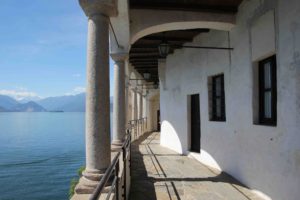The gallery, founded in 1983 by Fiorenzo and Alessandro Cesati, specializes in European sculpture and works of art dating from the Middle Ages to 20th century and is located in the heart of Milan, a few steps from the Sforza Castle.
Drawing on a strong family tradition marked by excellence in the fields of art and music, the Alessandro Cesati gallery is nationally and internationally renowned for the careful search and selection of artworks based on the basis of quality, rarity and curiosity.

Among its clients, the gallery includes important international collectors and prestigious museums, such as the Uffizi Gallery in Florence, the National Gallery in Washington and the Rijksmuseum in Amsterdam.
In addition to the brokering, buying and selling of works of art, the gallery offers its expertise in evaluations and appraisals, cataloguing, displaying, restoration and assistance for all import and export documentation.
The gallery has been participating for more than thirty years now in the most prestigious European art fairs, such as TEFAF Maastricht and the Florence International Biennial Antiques Fair.
Alessandro Cesati is a member and Councilor of the Italian Antiquarians Association.




